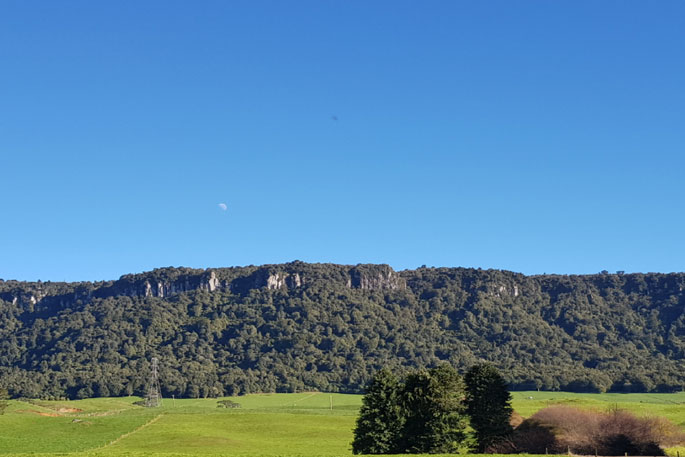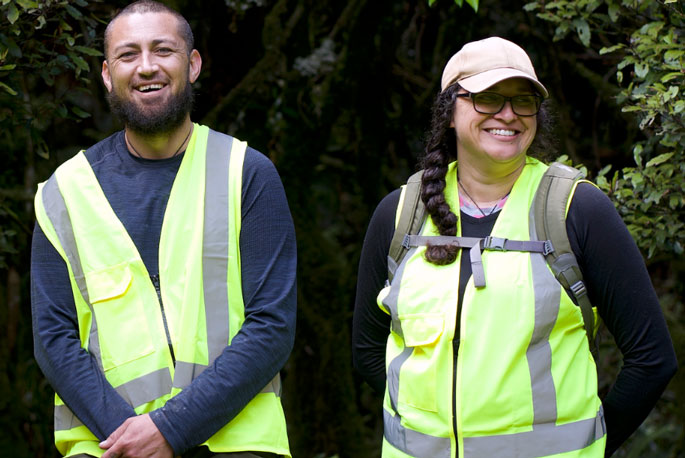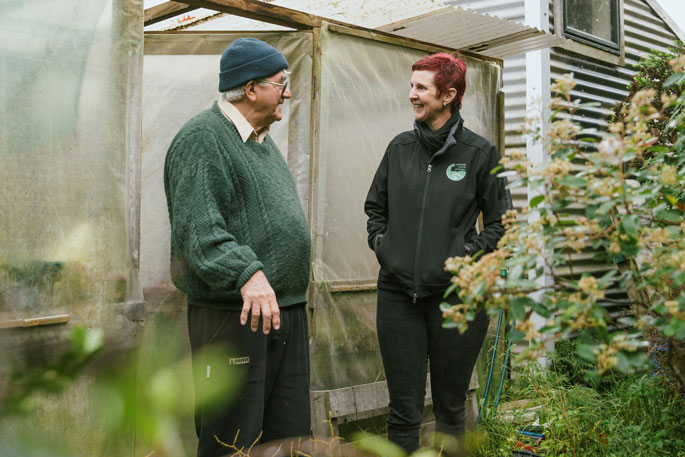A $25,000 lifeline has been thrown to a hapū-led conservation project near Rotorua which will help keep the pressure on pests and allow native species more time to recover while further funding is sought.
Ngāti Kearoa, Ngāti Tuara’s Te Whakamaru o Horohoro project is working to protect species like the long-tailed pekapeka (bat), kākā and kōkako by eradicating feral cats, rats, mustelids and possums from 1300ha of land surrounding the Horohoro maunga southwest of Rotorua.
The initiative is part of the wider Kaimai Mamaku Restoration Project which is overseen by the Manaaki Kaimai Mamaku Trust (MKMT). BayTrust has granted $300,000 to MKMT over the past three years to help top up central government’s Jobs for Nature funding which largely concluded in June 2024.
But this additional grant, along with collaborative funding from Rotorua Trust, will allow Te Whakamaru o Horohoro to continue until at least mid-2025.
“We were genuinely thrilled for Ngāti Kearoa, Ngāti Tuara,” said MKMT CEO Louise Saunders. “The project areas are culturally significant landscapes and this hapū’s relationship with taonga species, especially pekapeka, is helping to restore their connection to their whenua.”
 Horohoro. Supplied photo.
Horohoro. Supplied photo.
BayTrust’s grant will cover operational costs for the next six months and allow native species like kōkako, pekapeka, kākā, kereru, kārearea (falcon), yellow-crowned parakeet and pōpokatea (whitehead) to expand their populations.
“These mobile bird species use forest patches across a wide landscape like stepping stones, so increasing the area under pest animal control beyond the main Mamaku forest improves the resilience of these species and their ability to maintain and increase population numbers,” Saunders explained.
Pekapeka monitoring has been undertaken by Ngāti Kearoa, Ngāti Tuara over the past three years which shows the presence of these precious taonga and has allowed their pest control team to refine their rat control programme.
 Te Runanga o Ngati Kearoa Ngati Tuara team members Kyle Kiel and Kataraina George.
Te Runanga o Ngati Kearoa Ngati Tuara team members Kyle Kiel and Kataraina George.
“The BayTrust funding is a clear acknowledgement of the value of collaborative funding, mana whenua working in te Taiao, and the pressing need to continue the work started by Jobs For Nature. We are fortunate to have a huge conservation community in the Bay of Plenty but few mana whenua projects, so BayTrust’s support of iwi-led conservation projects is very special,” she said.
One of the main challenges now that Jobs for Nature funding has largely finished, is how to keep the momentum going.
“The current funding model for conservation is broken - the government and councils can’t afford the full scope of restoration needed, philanthropy can’t and shouldn’t cover the full cost, and donations shift the cost to an already-stretched community. The funding model needs to be completely re-thought and business needs to step into the frame,” Saunders explained.
MKMT is currently piloting a new investment model, and Bay of Plenty businesses are invited to register their interest now. “Our big goal is to provide businesses with a transparent way of investing directly into impactful local projects, like this one, to deliver sustainable funding that restores sustainable environments.”
BayTrust CEO Alastair Rhodes acknowledged that Te Whakamaru o Horohoro is part of a wider conservation effort covering 300,000ha across the Kaimai Mamaku forests and their catchments.
“There are huge biodiversity benefits across our region if we can permanently control target pest animals,” he said.
“Horohoro has been an environmental haven for centuries before pests were introduced, and we hope this funding will sustain Ngāti Kearoa, Ngāti Tuara’s efforts to restore their whenua to its former glory.”



0 comments
Leave a Comment
You must be logged in to make a comment.